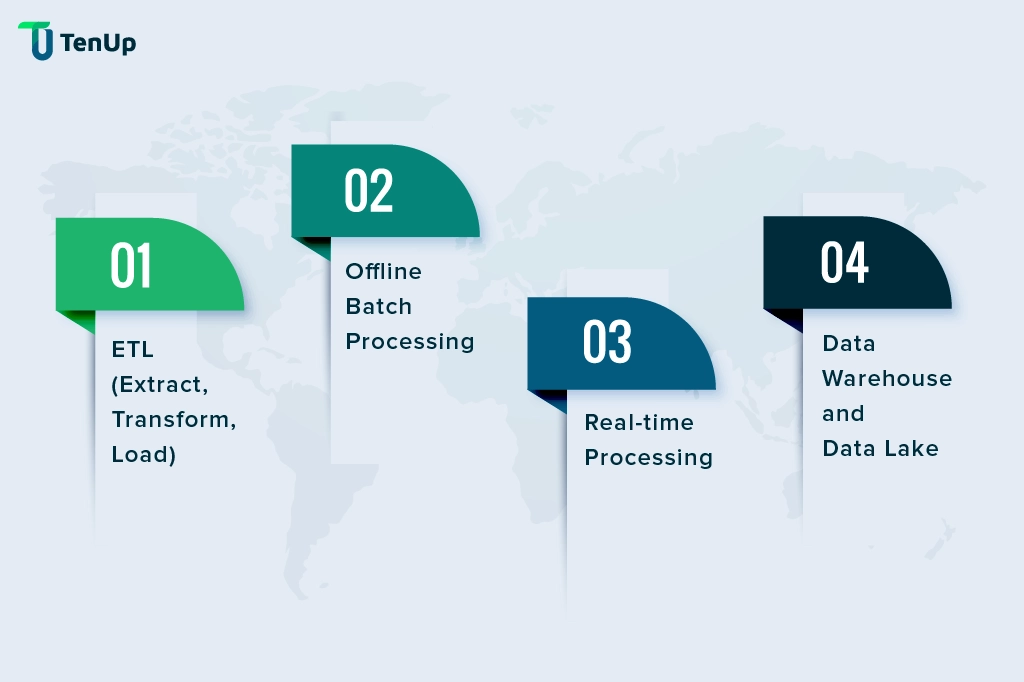#DataEngineering#Pipelines#Cloud
Cloud Data Engineering Tools is a collection of tools and services that allow for the creation, development, deployment, and administration of data pipelines and data processing processes in a cloud computing environment.
These technologies are specifically built to perform large-scale data processing jobs efficiently and reliably, taking advantage of cloud infrastructure's scalability and flexibility. Cloud data engineering tools help in data extraction, transformation, and loading (ETL), as well as data integration and processing, making them essential components of modern data-driven applications and analytics.


Cloud Data Engineering is designing, building and operating scalable data pipelines and workflows on cloud native technologies. Data ingestion, transformation, storage and orchestration to ensure high performance, reliability and cost efficiency. Using cloud services like AWS, Google Cloud and Azure, cloud data engineering enables data integration, real-time analytics and AI driven insights so businesses can make data driven decisions at scale.

ETL tools are essential in cloud data engineering because they allow for the extraction, transformation, and loading of data from several sources into a destination, such as a data warehouse or a data lake. These technologies allow data engineers to efficiently collect data from databases, apps, APIs, and other sources, perform suitable transformations, and load the processed data into the desired storage for further analysis and reporting.
Offline Batch Processing is a fundamental component in cloud data engineering, including the processing of massive amounts of data at regular periods. Cloud-based batch-processing solutions enable data engineers to manage enormous datasets more efficiently by dividing them into manageable parts and processing them in parallel. Because it optimizes resource use and cost-effectiveness, this method is excellent for instances where real-time processing is not required and data latency is acceptable.
Real-time processing tools are an important part of enterprise cloud solutions because they allow data engineers to respond to incoming data streams instantly, delivering quick insights and enabling rapid decisions. This functionality is critical for a wide range of applications, including real-time analytics, fraud detection, IoT data processing, and others, where rapid responses based on new data are required.
Data warehouses are suitable for business intelligence and reporting because they are geared toward query performance and structured data analysis. Data lakes, on the other hand, are intended to hold massive amounts of raw and unstructured data while also supporting multiple data kinds and enabling advanced analytics, machine learning, and data exploration.
Cloud data engineering technologies provide elastic resource provisioning and auto-scaling features, allowing enterprises to scale resources up or down based on demand. This ensures that data-intensive operations are handled efficiently and without regard for hardware restrictions.
Cloud data engineering solutions operate on a pay-as-you-go basis, allowing you to save money by just paying for the resources you utilize. This low-cost method eliminates the need for upfront infrastructure investments and allows for more efficient resource allocation.
Data engineering technologies provide seamless data integration from multiple sources, reducing the complexity of the extraction, transformation, and loading (ETL) procedures. ETL pipelines that are efficient ensure that data is easily transformed and fed into target systems.
make use of distributed data processing frameworks to enable simultaneous data storage and retrieval. This capacity improves processing speed and performance, allowing it to handle large-scale data processing jobs more efficiently.
Stream processing is supported by cloud data engineering tools, allowing for low-latency data intake and processing. Real-time data insights enable firms to respond swiftly to changing data conditions, hence facilitating important decision-making processes.
Cloud data engineering can efficiently handle and manage data by addressing these technical issues, ensuring dependable and scalable operations in the cloud environment.
Cloud data engineering tools provide an appealing choice for enterprises looking to improve data processing scalability.
These tools' versatility and scalability enable the seamless handling of data-intensive applications, accommodating ever-increasing data volumes without hardware limits. Adopting the pay-as-you-go model improves cost efficiency, optimizes resource utilization, and reduces upfront infrastructure investments. Furthermore, the seamless interface and quick ETL methods ease data integration from multiple sources, allowing data engineers to effortlessly transform and load data.
Ready to take your data engineering to the next level? Our expert cloud development services can help you unlock the full potential of cloud data engineering tools, enabling you to scale, optimize, and transform your data processes. Reach out to us today!